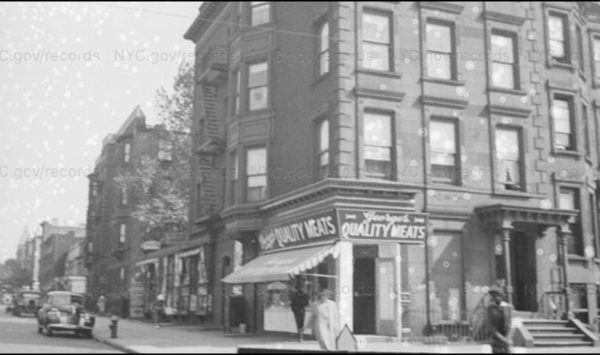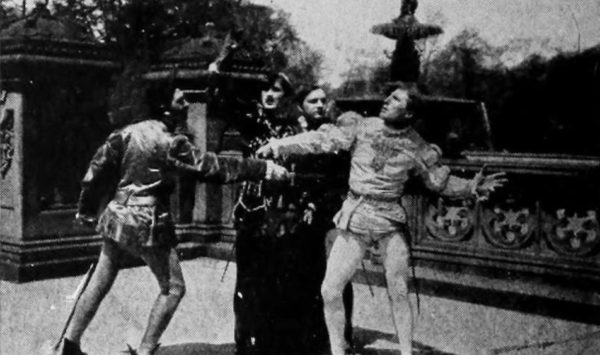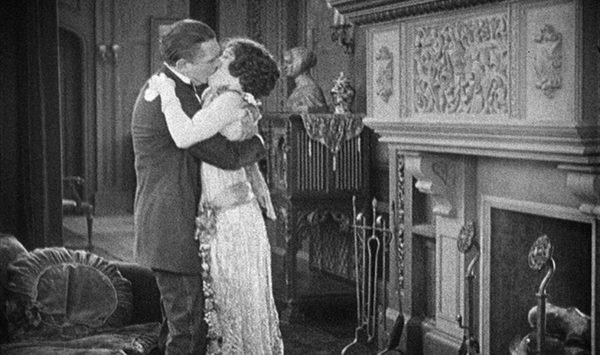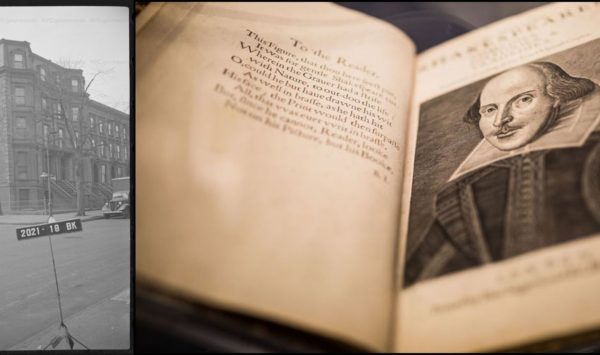“SHAKESPEARE’S GHOST” AT 437 HALSEY (1889)

******************************************************************************************************************************** Brownstone Detectives investigates the history of our clients’ homes. The story you are about to read was composed from research conducted in the course of one of those investigations. Do you know the history of YOUR house? ******************************************************************************************************************************** The Brownstone Detectives investigates the histories of our clients’ old houses. In the process, we have come across no small number of incredibly juicy stories featuring the houses and their lineage of occupants. Every once in a while, those stories – as stories sometimes do – feature a topic we rarely wade into – the paranormal. While most properties we investigate do not involve the supernatural, it is even rarer still to find an old brownstone that comes with a thoroughly debunked ghost story. No. 437 Halsey Street – in the Bedford Stuyvesant section of Brooklyn – is one of those houses… ***************************************************************************************************** In late 1889, during a strong snowstorm in the City of Brooklyn, word began to get around about the “haunting” of an apartment house at the corner of Halsey Street and Lewis Avenue, along with its complement of frightened and fleeing former residents… “…the snow was blowing everybody in doors yesterday,” started the Brooklyn Daily Eagle, setting the scene for its readers of “an ambitious little ghost story-started out on its career of making trouble. The “trouble” mentioned in this story was the reaction that the rumor of ghosts in the apartment house had engendered. It brought to the sole remaining occupant of the structure a whole host […]
ROMEO & JULIET “COME TO” BROOKLYN (1866)

******************************************************************************************************************************** Brownstone Detectives investigates the history of our clients’ homes. The story you are about to read was composed from research conducted in the course of one of those investigations. Do you know the history of YOUR house? ******************************************************************************************************************************** The City of Brooklyn’s street grid system was still in its infancy in 1860, some 25 years after it had originally been laid out in Brooklyn maps in 1835. As builders began to buy up land, and as city elders watched the progress of speculative construction move continuously eastwards, it became apparent that some adjustments to the street grid were going to be necessary. SHAKESPEARE TO THE RESCUE Throughout the early 1860s, various New York State legislators from Kings County – likely in consultation with builders, land owners, and lawyers – began to plan these adjustments. These adjustments would come into being in two ways: 1) as extensions of certain streets through land that had originally been planned for building purposes, as well as 2) the closures of certain other portions of streets that had made other parcels of land unusable for building purposes. Thus, a legislative amendment to the Commissioners’ Map of the City of Brooklyn was in the works, and Brooklyn senators, having consulted professionals on the proposed changes, got to work on the wording to make the needed adjustments. In the end, six adjustments would be proposed – one of which was the creation of the very Shakespearean street moniker, Verona Place. “WHAT’S IN A NAME?” Considering the […]
“HE CAME TO FIX THE ELECTRIC WIRE” (1938)

******************************************************************************************************************************** Brownstone Detectives investigates the history of our clients’ homes. The story you are about to read was composed from research conducted in the course of one of those investigations. Do you know the history of YOUR house? ******************************************************************************************************************************** “And if thow take a wyf unto thyn hoold, Ful lightly maystow been a cokewold.” With these words – and others – the Wife of Bath, in Shakespeare’s “Chaucer,” attempted to secure the hand of the knight by frightening him with the possibility of becoming a cuckold, a man whose wife is sexually unfaithful. The word has survived down the ages used in most derisive ways, but mostly as a lesson that men should pay more attention to their wives and take caution, particularly if they are pretty, that they do not “wander.” In 1938, this very tale unfolded for a mechanical engineer, whose wife “employed in a swanky Lexington Ave., Manhattan, hotel,” had the misfortune of being “caught in the act.” THE STORY ABOUT THAT “ELECTRIC WIRE” The whole story started when Thomas Goodfellow’s wife, Mary “Mae” Goodfellow, “a comely brunette,” one day left her husband and visited friends of theirs, Mr. and Mrs. Rafael of No. 628 40th Street. Along with her visit to Manhattan came her story that “she had had some trouble with her husband and asked for shelter.” Mrs. Rafael allowed Mrs. Goodfellow to remain and when the Rafaels left for Central Islip for the summer, “Mrs. Goodfellow was still there.” While Mrs. Goodfellow resides in […]
SHAKESPEARE AT NO. 24 BREVOORT PL (1928)

******************************************************************************************************************************** Brownstone Detectives investigates the history of its clients’ homes. The story you are about to read was composed from research conducted in the course of one of those investigations. ******************************************************************************************************************************** Henry C. Folger loved Shakespeare. His admiration for the author and his writings was such that he once paid $100K for a single folio of the bard’s work. The president of the Standard Oil Company was so smitten with Shakespeare’s works that, in 2014, a book, Collecting Shakespeare, was published about Folger and his collection. Folger, who started his relationship with Standard Oil as its director, would rise to become the chairman of its board, building a trusted relationship with the company’s owner, John D. Rockefeller, Sr. While frugal in the management of his money, Folger’s position with the largest oil company in the world certainly allowed him plenty of it to use in the pursuit of everything Shakespeare. And everything Shakespeare that he purchased for his collection eventually made its way to the library of their rented house at No. 24 Brevoort Place in Brooklyn, where the couple would live from 1910 through the early 1930s. FOLGER, BREVOORT, & SHAKESPEARE Henry Clay Folger’s collection of Shakespeareana included 35 copies of the 1623 first folio edition, of which only 200 copies were then known to be in existence. These earliest texts of William Shakespeare’s works were published during the 16th and 17th centuries in quarto or folio format. While quartos are smaller volumes, folios are large, tall volumes, roughly […]